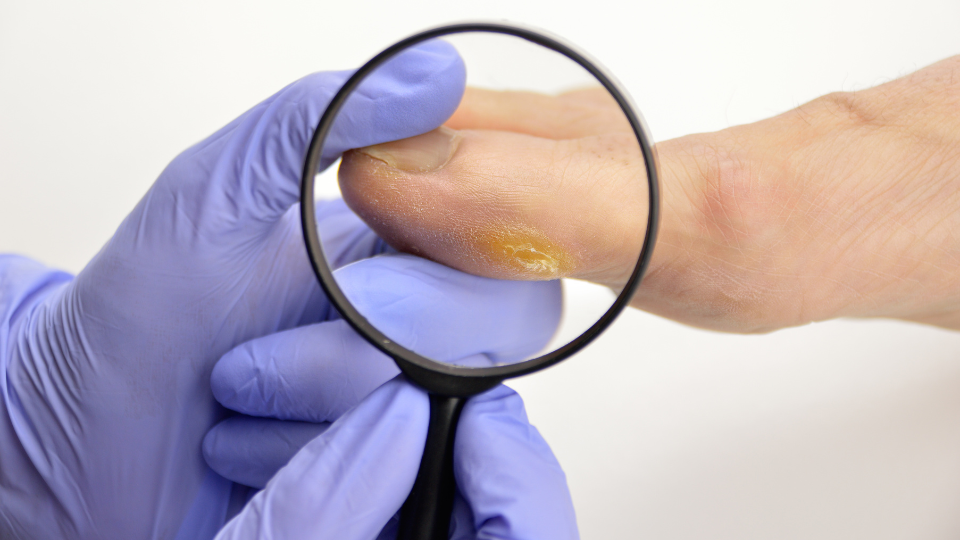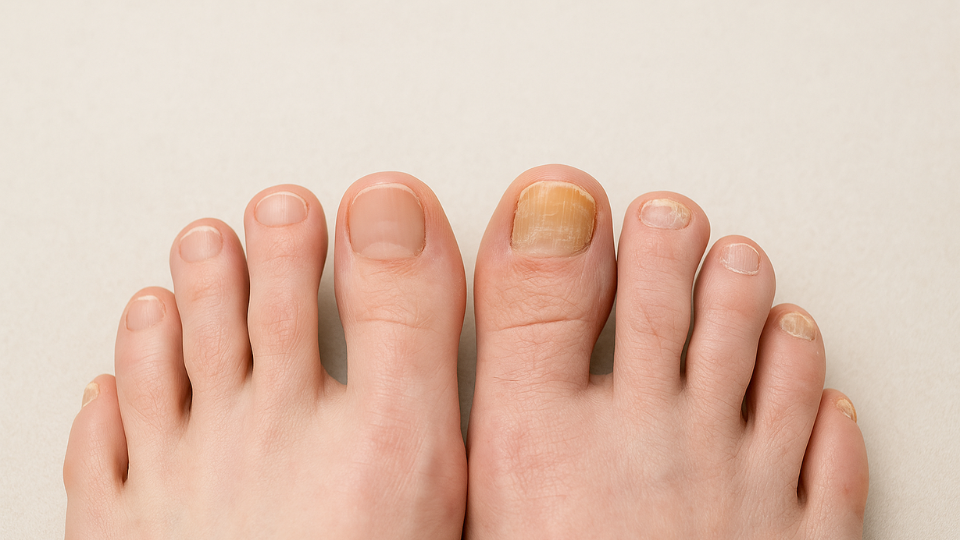Is Toenail Fungus Hereditary? What You Need to Know About Family Risk
Wondering if toenail fungus runs in your family? Learn about genetic risk, causes, and prevention from the podiatry specialists at FAS The Woodlands.

A thick patch of rough skin on your big toe might seem minor but if it’s painful, recurring, or impacting how you walk, it’s worth paying attention. A big toe callus can be more than just a cosmetic concern. In many cases, it’s your body’s way of alerting you to pressure, friction, or underlying biomechanical issues that need to be addressed.
In this article, we’ll cover the common causes of a big toe callus, how to treat it at home, and when it’s time to see a podiatrist for expert care.
A callus is a thickened area of skin that forms in response to repeated pressure or friction. On the big toe, calluses often appear on the side, top, or bottom of the joint and can vary in size, thickness, and tenderness.
Unlike corn (which is typically smaller and more painful), a big toe callus tends to have a broader, flatter surface and may not hurt at first. But over time, it can cause pain, alter your gait, or contribute to other foot issues if left untreated.
The most common causes of a big toe callus include:
In some cases, a big toe callus may develop due to a combination of these factors. For people with diabetes or nerve damage, even a minor callus can become a serious concern if it leads to skin breakdown or infection.

Important Note for Certain Patients: If you have diabetes, poor circulation, nerve damage (neuropathy), or any other condition that affects sensation in your feet, do not attempt to treat a callus at home. Even minor injuries or irritation can quickly lead to serious complications. In these cases, it's critical to have your foot care managed by a licensed podiatrist who can assess and treat the issue safely.
If your big toe callus isn’t causing pain or complications, you may be able to manage it with a few simple at-home remedies
Apply a rich, urea-based foot cream to help keep the skin soft and prevent thickening.
Use non-medicated corn or callus pads to reduce pressure on the area. These are available at most drugstores.
Wear shoes with wide toe boxes, good arch support, and cushioning. Avoid heels or pointed shoes that press on the toes. Not sure where to start? Check out our guide on how to choose the best shoes for foot pain to keep your feet supported and comfortable.
Once your big toe callus has been treated, it’s important to address the underlying cause. Here are a few prevention tips:
While many calluses can be managed at home, some require the expertise of a podiatrist; especially when they’re painful, persistent, or linked to other structural or medical concerns.
A podiatrist doesn’t just remove the callus. They investigate why it’s forming in the first place.
This is important because a recurring big toe callus may be a sign of:
Ignoring a big toe callus, especially if it's painful or persistent, can lead to deeper skin damage, changes in how you walk, and even long-term deformities. If it’s your body’s way of warning you, don’t wait.
Your feet carry you through life, take care of them early and often.
If your big toe callus is getting in the way of your comfort or daily life, don’t ignore it. What seems like a minor issue could be a sign of something more complex like poor foot mechanics or developing deformities.
Schedule your consultation today, our team at Foot & Ankle Specialists (FAS) The Woodlands can help you get to the root of the issue and create a care plan tailored to your needs.

Wondering if toenail fungus runs in your family? Learn about genetic risk, causes, and prevention from the podiatry specialists at FAS The Woodlands.